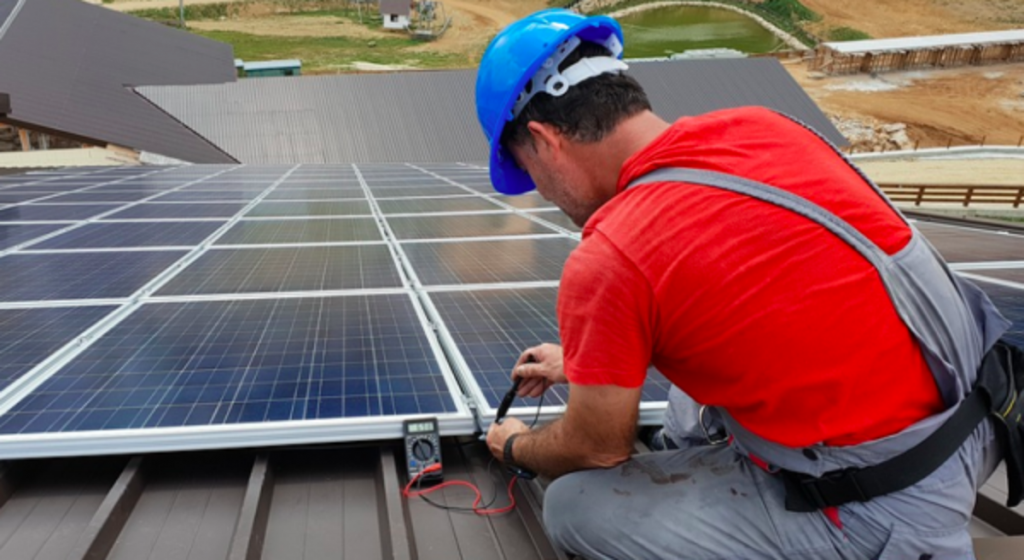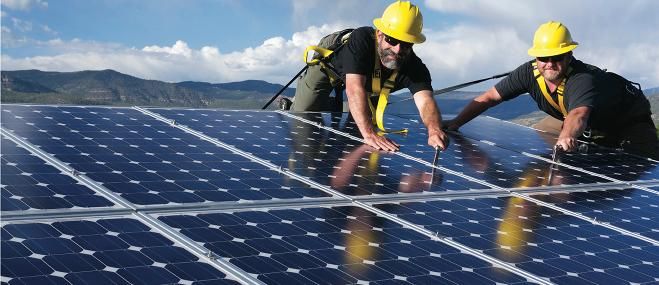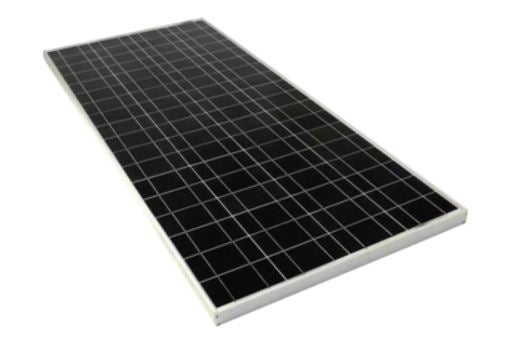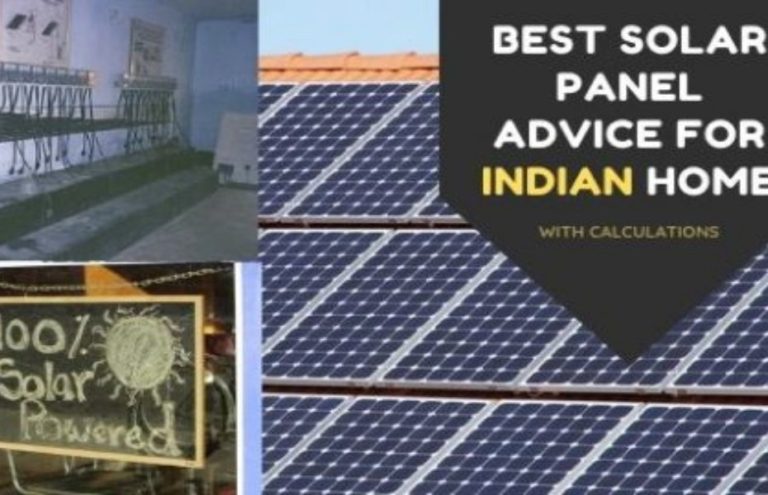With Years of research and paper studies, scientists can convert the much-awaited energy form required for the survival of humans. In the last decade, solar energy is being used in the most efficient form, whether it’s American company Intel for computers, Tesla for Cars, or Tata Power for Home batteries.

Solar panels and their energy have developed so much that every day thousands of Indian farmers are running their water pumps in the fields. Solar panel pricing is another thing which makes it easier for anyone to go for solar panels for their energy needs at industries, offices, or home.
According to one report

Renewable energy to expand by 50% in the next five years – report Ogling Inches thinks that in the coming years solar will drive the Indian homes. Electricity, ACs, Water supply, Kitchens everything.
Indian Government has already made it compulsory to harvest solar energy for water heating purposes in Indian metropolitan cities. There are hundreds of government schemes being rolled out for home use.
How does a solar panel work?
- That’s not as complex as you think,
- The rooftop solar power system combines 3 items, Solar panels, Inverter, and a specific solar Meter.
- Steps of Golden Conversion of the solar panel to usable energy -First, the photovoltaic cells absorb the sunlight falling on its surface and convert it into a direct current.

Then an inverter converts the direct current into an alternate current which is used by most of our household’s appliances.
The Inverter then sends the electricity to our solar meter, which calculates the amount of energy required by our household appliances and supplies them the required energy.
Now, it might be possible that there is some extra energy left in our solar panels after supplying it to the appliances.
That remaining energy is sent back to your electricity board via your meter, which then can be used by other houses. The government provides us with benefits and buy-back options for sourcing them the energy. Here is a very nice video I found on the Internet for your understanding of its working
What are the types of Solar Panels?
There are 3 types of solar panels: Monocrystalline, Polycrystalline, and thin-film panels.
With remote control or sensor-based functionality, these windows provide convenience and contribute to a more sustainable and intelligent home. Explore the seamless integration of technology with design for a futuristic and energy-conscious living space through the adoption of smart window technology.
Monocrystalline –

Mostly the panel comes in black color and the grids of Monocrystalline panels are chamfered from corners. They are comparatively costlier than Polycrystalline types (approx Rs. 5000 to Rs. 8000 price difference).
The lifespan of Monocrystalline varies from 25-35years depending on their usage and the temperature they are exposed to. They are 15-20% efficient which depends on the manufacturer and the purity of the silicon used in them.
Their efficiency reduces by 0.5% to 1% every year of effective efficiency. For example, if its efficiency is 18% current year then in the next year, its efficiency will be reduced by 1% of that 18%, i.e., 18% – 0.18 = 17.82% efficient. They are more efficient than Polycrystalline. Are suitable for regions that have cloudy sky or passive sunlight distribution. Monocrystalline panels also take less installation space than their other version.
Polycrystalline –

- The Polycrystalline panels are generally blue and dark blue and have horizontal & vertical lines forming a grid.
- The panel’s life span ranges from 23-27 years.
- These are lesser in cost than Monocrystalline but are also less efficient.
- Their efficiency ranges from 13% to 16%. And reduces by 0.5% to 1% every year of its effective efficiency. For example, if its efficiency is 13% in the current year then the next year its efficiency will be reduced by 1% of 13, i.e., 13%-0.13 = 12.87%.
- The Polycrystalline panels take comparatively larger spaces for installation but this does not mean that they produce less energy than Monocrystalline, which is a common belief but a 100watt Mono and a 100watt Poly will generate the same amount of power.
- Thin-film panels-

- These panels are not very common as their efficiency differs between 10% to 15% and the setup cost is almost that of mono or polycrystalline panels.
- The life spans of Thin-film panels range between 10 – 15 years.
- Their efficiency reduces by 2% every year on its effective efficiency.
Get Oglinginches Blog email updates daily in your inbox
We’ll only use your email ID to send you blog updates.
See our privacy policy.
Pros and Cons of Solar Panels/energy?
Pros:
- Solar energy is a renewable energy source.
- It creates No to minimal pollution.
- It is easy to install.
- Very little maintenance is required.
- It generates no noise; it is a silent energy-producing system.
Cons:
- The initial setup cost of panels fixing and system installation is a bit high.
- You cannot solely depend on it to source your house, as in a cloudy or rainy climate the solar panels may fail to generate the required energy amount.
- Although it does not produce any pollution in the final process, the panels emit greenhouse gases at the manufacturing stage.
- It is beneficial if you use it for long term use.
- What are the available best Indian Government schemes?
The MNRE (Ministry of New and Renewable Energy) regulates guidelines and subsidy plans for the solar system. The Benchmark cost of Grid-connected rooftop solar Panel systems determined by MNRE is about Rs. 75 per watt.
Now, both the central government and the state government provide subsidies for solar power systems. The Central government pays 30% of the installation cost of rooftop power plant systems.
However, a subsidy of up to 70% of the benchmarked installation cost is offered in some states. The Maharashtra governments provide 30% of the project cost.
Government-approved companies give up to 5 years of warranty on the whole setup and a 25-year warranty on the solar panels.
How to determine the solar panel wattage required for your space?
Steps to calculate your house solar panel needs
- List down all the appliances and electronic fixtures used in your space and multiply their wattage and the total number of hours you use them.
- For example, if there are 4 LED bulbs of 12 watts, 2 fans, a washing machine, and a refrigerator functioning in your house, and you use them for a total of 15hours. Then 4x12watt*15hours = 720watt/hour for LEDs.
- A regular havells fan uses 50watts which means 2x50watts*15hours = 1500watt/hour. Now 250watts for refrigerator, so that will be 250watts*15hours=3750watt/hour. Washing Machine of 500watt for 2hours = 1000watt/hour
The total energy required in your space is 6790watt/hour.
- Converting it into KWH = 6.8 KW, rounding off let’s consider we need 7 KW daily.
- Now, if you take 1 panel of 100KW which effectively produces 3.5 – 4 KWH daily.
- The below calculations are very handy to understand the fact of energy and money-saving
So you’ll need approximately 2 panels of 100KW to source 7KW energy.
Conclusion :
Read what I saying here, YES!
I Hope, This small article would have cleared major doubts about solar panels in India. Trust me, considering the long term cost efficiency of solar power, Solar Panels are the best bet you can buy for your house.
If you need more help you can call Sukaam. They have great customer complaint solutions and quick delivery.




